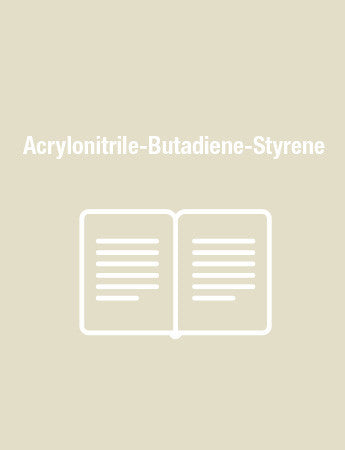Fluoroelastomers Handbook: The Definitive User's Guide and Databook
The comprehensive reference on fluoroelastomer chemistry, processing technology, and applications. This is a must-have reference for materials scientists and engineers in the automotive, aerospace, chemical, chemical process, and power generation industries. Fluoroelastomers meet rigorous performance requirements in harsh environments, enhancing reliability, safety, and environmental friendliness. Fluoroelastomers are growing as products of choice for critical components such as O-rings, hoses, and seals in hostile fluid and temperature conditions.
The first part of this book is an overview of fluorocarbon elastomers, including descriptions of the nature of fluoroelastomers, properties of various compositions, developmental history, and major uses. The second part provides more details of fluoroelastomer technology, including monomer properties and synthesis, polymerization and production processes, cure systems, and processing methods. The third and last part covers fluid resistance of various fluoroelastomer families, major applications of fluoroelastomers, and safety and disposal.
Key Features
• Sections on polymerization include considerable theoretical detail.
• Sections on technology emphasize what is currently used commercially, along with some developments likely to become important in the future.
• Trends in product development, emerging uses, and methods of fabrication are discussed.
• References at the end of each chapter serve as a bibliography and additional reading resources.
The first part of this book is an overview of fluorocarbon elastomers, including descriptions of the nature of fluoroelastomers, properties of various compositions, developmental history, and major uses. The second part provides more details of fluoroelastomer technology, including monomer properties and synthesis, polymerization and production processes, cure systems, and processing methods. The third and last part covers fluid resistance of various fluoroelastomer families, major applications of fluoroelastomers, and safety and disposal.
Key Features
• Sections on polymerization include considerable theoretical detail.
• Sections on technology emphasize what is currently used commercially, along with some developments likely to become important in the future.
• Trends in product development, emerging uses, and methods of fabrication are discussed.
• References at the end of each chapter serve as a bibliography and additional reading resources.
Part 1: Fluoroelastomers Overview
1. Fundamentals
2. Fluoroelastomer Composition and Properties
Part 2: Fluoroelastomers Technology
3. Fluoroelastomers Monomers
4. Production of Fluoroelastomers
5. Cure systems for Fluoroelastomers
6. Processing of Fluoroelastomers
Part 3: Fluoroelastomer Applications
7. Fluid Resistance of VDF-Containing Fluoroelastomers
8. Fluid and Heat Resistance of Perfluoroelastomers
9. Fluid Resistance of TPE-Olefin Fluoroelastomers
10. Fluoroelastomer Applications
11. Compounds for O-Rings and Molded Goods
12. Compounds for Auto Fuel Systems
13. Compounds for Auto Power Train Service
14. Compounds for Power Plant Service
15. Other Fluoroelastomer Applications and Processing
16. Fluoroelastomer Safety and Disposal
1. Fundamentals
2. Fluoroelastomer Composition and Properties
Part 2: Fluoroelastomers Technology
3. Fluoroelastomers Monomers
4. Production of Fluoroelastomers
5. Cure systems for Fluoroelastomers
6. Processing of Fluoroelastomers
Part 3: Fluoroelastomer Applications
7. Fluid Resistance of VDF-Containing Fluoroelastomers
8. Fluid and Heat Resistance of Perfluoroelastomers
9. Fluid Resistance of TPE-Olefin Fluoroelastomers
10. Fluoroelastomer Applications
11. Compounds for O-Rings and Molded Goods
12. Compounds for Auto Fuel Systems
13. Compounds for Auto Power Train Service
14. Compounds for Power Plant Service
15. Other Fluoroelastomer Applications and Processing
16. Fluoroelastomer Safety and Disposal
Dr. Albert L. Moore, with a Sc.D. from MIT, began his career in 1961 with DuPont as a research engineer in the Elastomer Chemicals Department. He accumulated more than twelve processes and composition of matter patents during his career of nearly forty years, including twenty-five years in fluoroelastomers research and development. His contributions included several new fluoroelastomer compositions and polymerization process improvements. At the time of his recent retirement, he was the only recognized Senior DuPont Dow Scientist and was a recipient of the 2000 DuPont Lavoisier Medal for Technical Achievement. Recently, he received the 2004 Technical Award from the International Institute of Synthetic Rubber Producers.




